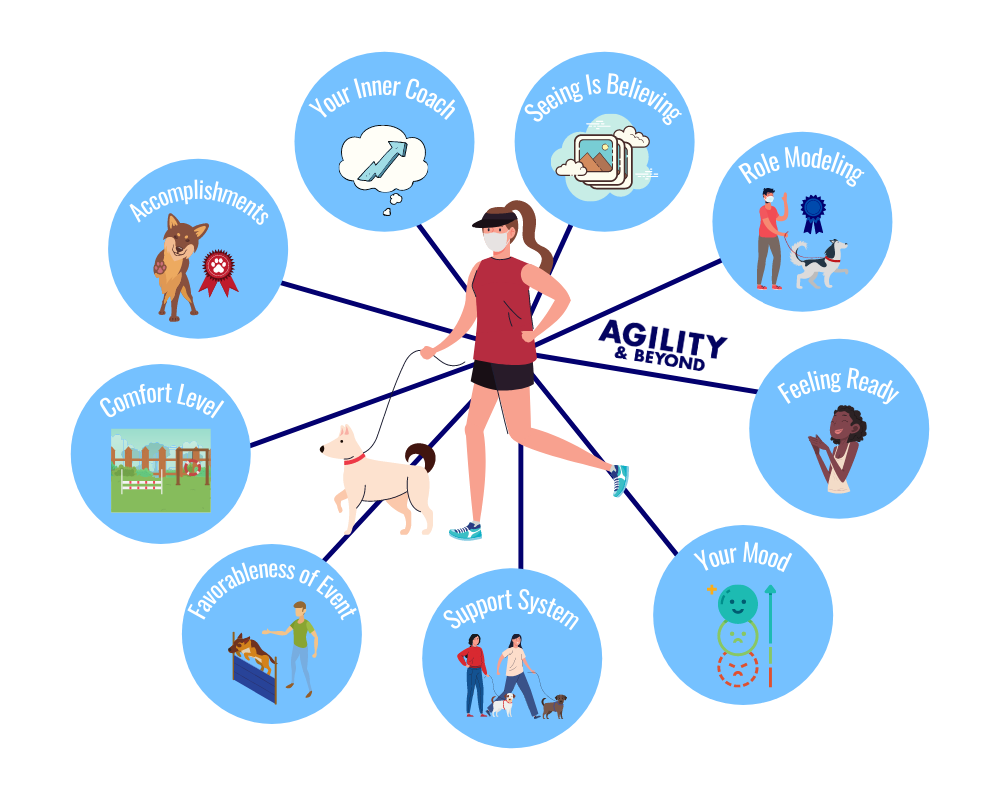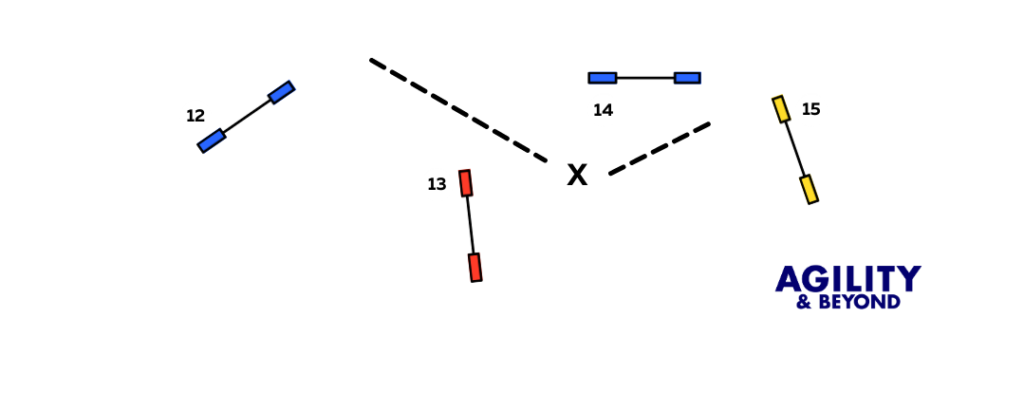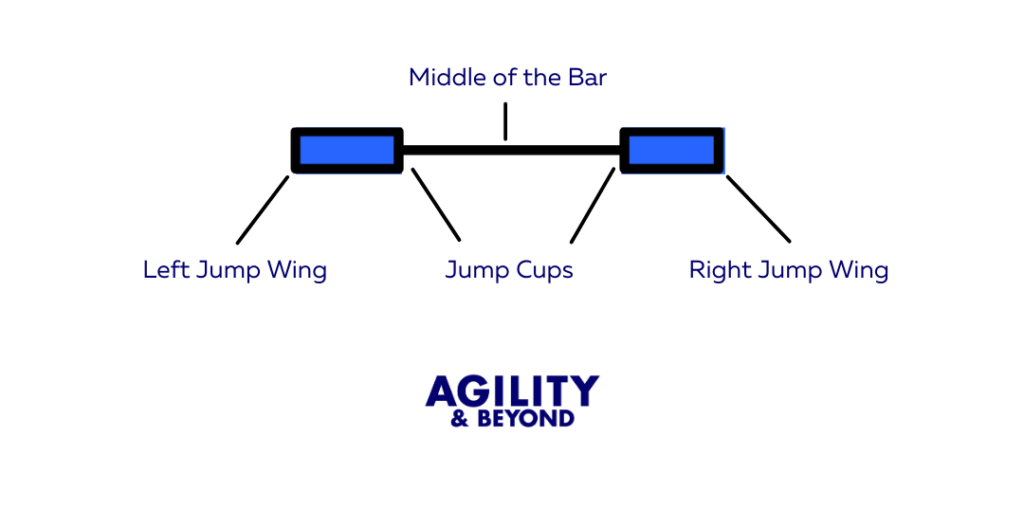This page features information on mental performance in the sport of dog agility. You’ll find easy-to-use strategies and tips for improving your mental game in agility.
Sign up for our newsletter, The Weekly Walkthrough, to stay up to date on new training resources.
Pick a topic to begin:
Boosting Your Confidence
Being confident on course can keep you focused, improve your technique and boost your overall performance.
It’s no secret that self-confidence helps athletes in every sport reach their potential. Understanding your self-confidence, how it changes and how you can boost it will give you a competitive edge at any competition.
Self Confidence defined as “believing in your ability to successfully perform a task.”
Feeling confident on course means you trust your physical and mental abilities, feel competent and sure that you can handle the challenges well. This confidence can come to some handlers naturally; this can come from being validated that your handling is smooth or dance-like. Or, you may feel athletic, balanced and coordinated when running with your dog on course.
Whether or not you feel a natural sense of confidence when it comes to handling, your confidence will change throughout the day or your life. Depending on the course, your dog, the stakes or your mood, you may feel your confidence shift up or down.
Thankfully, any handler can influence their level of confidence. Whether you’re someone with natural confidence that’s feeling low or a handler that’s never felt sure of their plan, there are actions you can take to boost your confidence when you need to perform your best on course.
The trick to building up your confidence is to pull inspiration, evidence or assurance from the nine sources of self-confidence below.

9 Sources of Self-Confidence
1. Accomplishments: You can review your past accomplishments to remind yourself that you have succeeded in the past and can again today.
2. Your Inner Coach: You can use positive self-talk to boost your self-confidence.
3. Seeing Is Believing: You can use imagery to experience success handling before you run the course.
4. Role Modeling: You can use “role modeling” by watching a handler you admire and replicating their handling moves or style in your own training.
5. Feeling Ready: You can shift your mindset around nerves; “feeling ready” means you understand that those butterflies, jitters and rapid heartbeat before your run are working to prepare you to handle your best.
6. Your Mood: You can change your mood for more confidence; use a favorite quote, song or routine to improve your mood before competing in agility.
7. Your Support System: You can reach out to your support system by surrounding yourself with people that believe in you.
8. Favorableness of the Event: You can remind yourself of how this course, a specific obstacle challenge or this event favors you in some way – like how your dog has the best weave entries or how you and your dog are always consistently clear in jumpers.
9. Comfort Level: You can remind yourself how this competition is just like practice. Think about what in your environment, routine or handling is the same as it is in your own backyard; this can help boost your comfort level which makes it easier to feel confident.
Whenever you’re feeling low or doubting your abilities to handle well, come back to these nine sources of confidence.
It’s important to develop all of these sources of confidence; this prevents you from relying too heavily on one. If your support system isn’t there or you can’t play your favorite tunes, you’ll want alternative strategies in place to improve your confidence. The more you practice boosting your confidence, the easier it will be to stay confident when it counts the most.
If you need help with your self-confidence on course, you click here to set up a one-on-one mental performance session with Kathleen.
Understanding Your Nerves
“Nerves” is a feeling or state of worry around an uncertain outcome of a task, such as running an agility course.
You become nervous when you perceive there to be a discrepancy between task difficulty and your capabilities. In other words, you stress when you don’t believe you have the mental or physical abilities to meet the challenge before you.
The larger the discrepancy we perceive, the more stress and subsequent “nerves” you’ll experience.
Nerves are unique to each handler as sources of competition stress are situational and personal. Below you’ll find the three main sources of competition stress explained.
3 Sources of Competition Nerves
Event importance:
The more important you believe a run or competition to be, the more stress you’ll experience.
For example, this is best demonstrated by the MACH run. How often does a handler earn 19 double Qs and then get stuck!? While this is technically “just another trial day”, the perceived importance of the final double Q adds stress to the task they’ve completed 19 times before.
Level of Uncertainty:
The more unknowns surrounding a performance, the more nerves you’ll experience.
For example, you may experience an increase in uncertainty when trialing in a new location. A new competition site means a plethora of unknowns and unknowables that can contribute stress.
Confidence:
The less capable you perceive yourself to be, the more stress you’ll experience.
For example, a specific handling move you don’t feel you’ve practiced enough to perform in a trial. Feeling unfamiliar with a handling move in your plan can add stress. Additionally, previous experiences (good or bad) with a specific obstacle challenge or when competing at a certain level can alter how we perceive our capabilities. Such as, I always NQ in this building or under this judge.
These sources of stress are ever-changing and interact with one another throughout your trial day or weekend. Being aware of these three sources of competition stress can help you understand what is contributing to your nerves and respond accordingly to decrease your stress.
If you need help with handling your nerves on course, you click here to set up a one-on-one mental performance session with Kathleen. Or, register for the self-paced course Handler’s Guide to Handling Nerves.
Handling with Focus
You just watched your dog’s tail disappear into the far end of a c-tunnel, and turn around to a sea of blue and yellow jumps. You hesitate before shifting your gaze to the blue wing jump to your right. As you move through your blind cross, you feel a small gust of wind past your legs as your dog appears on the wrong side already charging towards the off course.
You were a few handling adjustments from a fantastic, flowy run.
Using the handling tips below you can refine your timing and execution. Not only will you enhance the efficiency of your handling, regardless of your system or style, you’ll be better able to respond before things go wrong.
Watch Your Dog to cue your handling moves.
Use what you see your dog doing on course to adjust and execute your handling plan efficiently. As your dog runs and jumps, watch their movements for information about how they’re responding to your cues. For example, what can you learn from their take off point, stride length, or where your dog is looking on course. This information helps us make quick and effective handling decisions.
Use Other Visual Cues to stay oriented on course.
When you’re walking your plan, look for relevant visuals to help you stay focused on the next step in your handling plan. This can be using colors of obstacles, visuals on your path (like another obstacle), or aim for a specific section of an obstacle you’re handling. Your dog’s movement, such as watching them commit to the backside of a jump, can cue you to start moving for your next handling point.
These visuals cue YOU what to do next in your handling plan.
Want to learn more about using visuals on course – Click Here
Stay In the Run to keep your focus on handling.
Great handlers aren’t perfect, they’re adaptable.
Too often when mistakes happen handlers quit handling. Getting caught up analyzing a mistake on course shifts your attention to internal factors; like feeling frustrated, wondering what went wrong, or thinking about what you should’ve done. Keeping your head in the game and focus on what’s next will make you a better handler overtime.
So, stay mentally flexible while handling no matter what happens on course.
Related Articles
Leash Your Focus
Better understand how your attention is a valuable resource at an agility competition, and how “controlling the controllables” can make a difference in your performance.
Tips for Staying Oriented On Course
You’re quickly approaching a cross on course as your dog speeds towards you out of a tunnel. With two off courses nearby, you can’t afford to take your eyes off your dog for even just a moment. But, you want to be sure of your cross placement headed into the next sequence and you want to check ahead to be sure you’re cueing the turn on time.
Taking your eyes off your dog could risk the run and so can having a bad cross… What’s a handler to do?!
Getting oriented on course can be tough when you’re running as hard as you can to keep up with your dog. Rather than split your attention trying to look where you’re going AND keep your eyes on your dog, you can use the mental performance strategies below.
Use the Obstacle Colors
If you’re worried about where you’re supposed to be on course, you can use the equipment around you to your advantage. Your brain processes visual information quickly and more effectively than other sources of information (like from sound or smell). When on course we can expedite this process by priming our eyes to search out specific information that’s valuable for our performance.

Using colors is an easy and effective way to do this. When you’re walking your plan, remember what color obstacle is before your crosses or important cues. Knowing that your front cross is after the red jump can help your brain orient faster while staying focused on your dog.
Use Visuals Along Your Path
Not to worry if the obstacles you’re headed for are out of sight, you can use anything in your visual field (aka: what you can see from any given position) as a mental cue. This means using what you can see while keeping your eyes on the dog to stay oriented on course.
For example – see the sequence to the right – a handler that plans to blind cross before jump 13 can’t see the jump while they’re approaching the cross.
Looking behind you while running forward and supporting jump 12 is nearly impossible! But, the placement of the blind cross was imperative to getting the correct side of jump 13. Turn too soon and you’d surely send the dog off course.

When planning this cross, I asked the handler to use the bottom of the a-frame as their visual cue. The bottom of the a-frame was in line with jump 13, and easily visible without taking their eyes off the dog. Once the handler passses the bottom of the a-frame they knew for certain that their blind cross would be appropriately placed.
Not only does this mental strategy provide a confidence boost for the handler, it provides our dogs timely and well placed cues. A win-win!
Use Sections of the Obstacle
When executing a cue on a single jump your handling mechanics matter – a lot! We all know that stepping one foot to the left or right can drastically change the dog’s path later down the line. Luckily, we can use the jump itself to cue us to handle better.
Think of the jump (or other obstacles) in sections – the left wing, jump cup strip, middle of the bar, jump cup strip, and right wing – depending on the challenge you can aim for one of these sections to keep your handling cues specific and consistent for your dog.

For example, when aiming at the backside of the jump there is a certain line of approach for a handler that best supports their dog. With my 12” sheltie I aim at the jump cups of the wing I’m sending my dog around. However, my 20” border collie needs me to aim at the opposite wing to cue a backside. With a little bit of practice and awareness of what line of approach best supports my dog I can automate my handling mechanics and give myself an easy visual to aim at while executing a cue.
For an extra boost of brain power, combine these strategies to enhance your handling! Using visual cues can help you stay focused and handle with confidence.
If you need help with using visual cues or staying focused on course, you click here to set up a one-on-one mental performance session with Kathleen.
Positive Thinking
More mental performance strategies on this topic coming soon…
Related Articles
Positive Thinking: Why bother and how to start
This article explains how thoughts impact your performance on course. You’ll also learn to look for three types of negative thoughts that may be hindering your progress.
Looking for more resources?
Contact Us to ask a question, we’re always happy to share information and additional resources.
OR
Check out our Explore Beyond Agility page to get links to our favorite books, articles, podcasts and more.
